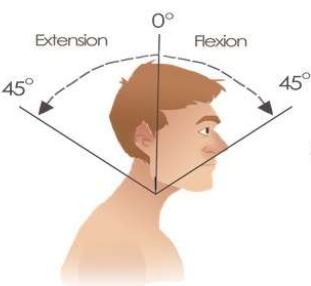Hi, it’s Dr. Centeno. And this is a series on what you can do at home to understand why you hurt. In this case, we’re to talk about why you have chronic neck pain. And this one’s entitled R0M Secrets, or “Range of Motion Secrets.”
Range of Motion Secrets: Neck
So if you’re stuck at home, what can you do to figure out why your neck is hurting all the time? And this is part of a bigger video series about self-exam and diagnosis that you can do at home.
I’m going to share lots of different secrets that I’ve learned through the years over a lifetime of treating patients in the clinic. So our focus today is what you can learn from neck range of motion. This seems like a real simple thing. That’s how far you can move your neck, but it can tell you an awful lot about what’s wrong with your neck.
Test 1: Neck Rotations
So in this case, let’s do rotations. So turn your head all the way to the right and all the way to the left. And, if you can get your chin to your shoulder, that’s about 80 degrees and that’s normal. But if you can’t, then that can indicate some problems or if it hurts.

So what does that mean if you can’t get your chin to your shoulder and turn your neck all the way? Well, there’s one more test to do before we decide that.
Test 2: Supine Range of Motion Test
So for this test, you lie now face up. So rather than doing the range of motion in rotation when you’re seated or when you’re standing and want you to lie, face up on a bed, relax, turn your head to the right, turn your head to the left.

You can stop the video and come back and see if you can get further, if you can get further. That means that the neck muscles are preventing you from moving your neck all the way when you’re seated or standing.
What does it mean if you’ve got pain on the same side as the head turn?
Now, what does it mean if you’ve got pain on the same side as the head turns, if you turn your head to the right, you’ve got right sided neck pain, that could mean that the facet joints, which are little joints in your neck that allow motion can be injured or they can be damaged due to arthritis.
How about if you’ve got lots of cracking and popping?
You’re moving your neck around. That could mean degenerative instability. That means you’ve got arthritis in the neck and that arthritis is allowing the bones to move too much because the ligaments have gotten loose.
How about range of motion, inflection and extension, if you look down all the way and back all the way, that’s around 45 degrees normal as shown (below).

But if you can’t extend your neck fully, that might be due to, again, an injured or damaged facet joint or a loss of the normal neck curve. And you can see it if it’s a loss of a normal net curve by simply doing this towel test (see image below), using a towel to pull forward as you bring your neck back, and if that helps, then your neck pain could be due to loss of that normal neck curve.
Test 3: Towel Test

If you’ve got limited flexion or looking down and that causes pain in your neck. Now, a lot of times, that can just be due to tight neck muscles. Other times it’s due to damaged ligaments in the back of the neck that are allowing one bone to move too much on the other.
So if you want more information, there’s lots more information as this video series continues about self-exam, things you can do at home to figure out why you hurt.
Thanks so much for watching. If you want to take your diagnosis further and get treated while avoiding surgery. See Regenexx.com. Thanks so much and have a great day.
